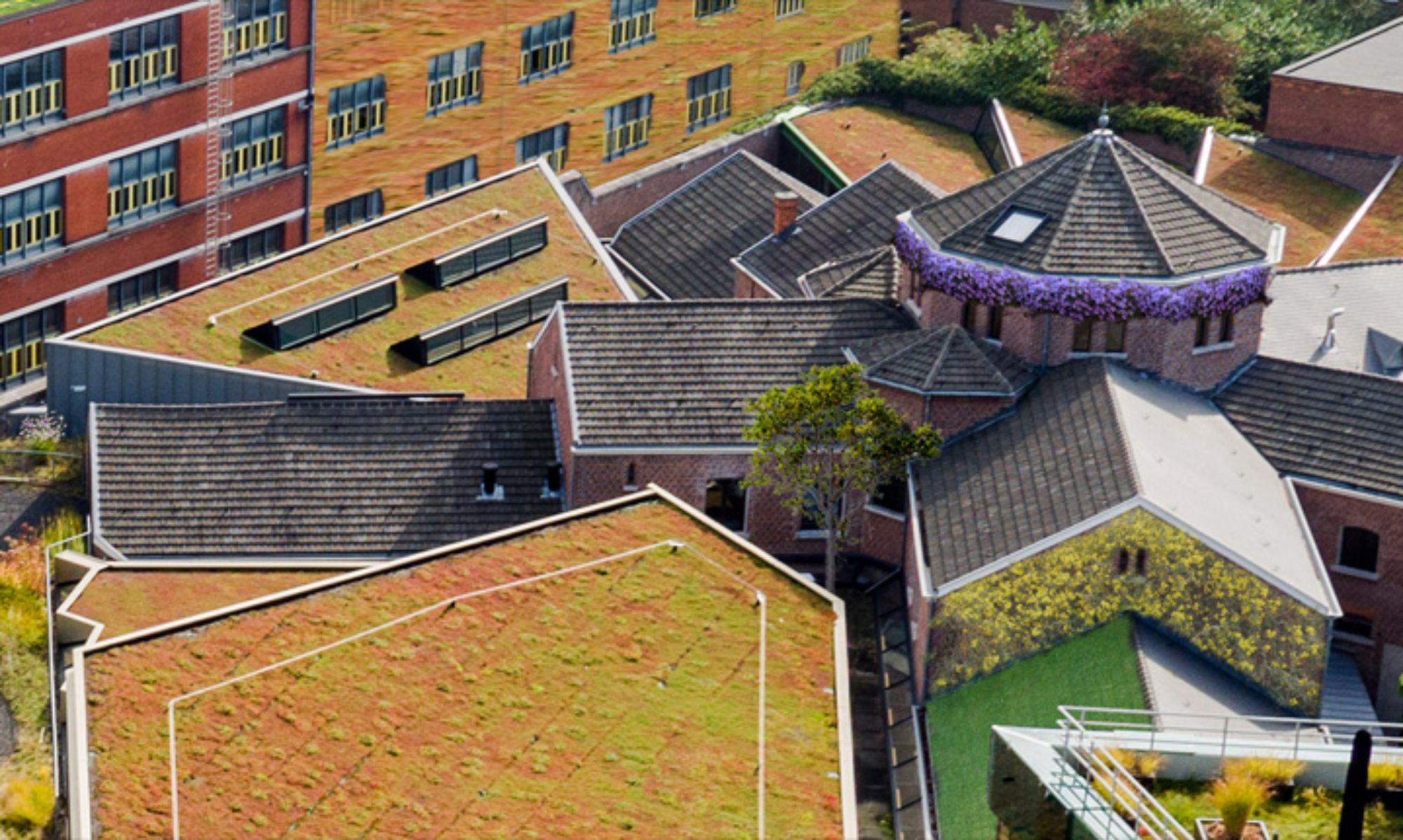Sonia Vanderhoeven is plantkundige gespecialiseerd in evolutionaire ecologie.
Ze is momenteel senior wetenschapper bij het Belgisch Biodiversiteitsplatform, een interface tussen wetenschap, beleid en praktijk, waar ze activiteiten coördineert rond invasieve uitheemse soorten en het behoud van biodiversiteit. Ze heeft een bijzondere interesse in de ecologie van invasieve soorten en de toepassingen ervan voor het behoud en beheer van biodiversiteit.
Ze is de facilitator van het Belgian Forum on Invasive Species (IAS) dat Belgische wetenschappers, beleidsmakers en veldmanagers samenbrengt om na te denken over het probleem en om oplossingen aan te reiken.

1. How can you relate your work activities to urban greening?
I am Science Officer at the Belgian Platform for Biodiversity which is an initiative of the Belgian Science Policy Office. We act as an interface between science, policy and practice in the field of biodiversity. We facilitate decision-making on biodiversity issues by developing tools and acting as a catalyst for ideas between the scientific and political spheres and actors in the field. I am in charge of issues relating to invasive species, which are one of the major threats to biodiversity. In a nutshell, these are species that have been deliberately or accidentally introduced into a territory, that proliferate and that impact biodiversity and ecosystem services, for example by outcompeting the native flora and fauna. There is a wide diversity of invasive organisms: plants, mammals, birds, reptiles etc. Urban areas are known to be hotspots for the introduction and establishment of exotic and invasive species. My relationship to urban greening is therefore somewhat ambivalent. On the one hand, urban greening is undeniably a way of improving biodiversity in an urban environment in which spatial pressure is increasing. But on the other hand, some actions carried out in this direction constitute sources of new introductions or facilitate the establishment and dispersion of exotic species in urban environments and even beyond, from one place to another in natural environments. As a result, they also have an adverse effect on biodiversity and the services provided by biodiversity.
2. What do you think are the key factors for a good human-nature relationship? How can urban greening contribute as much as possible to this?
I believe that the human-nature relationship can only be improved by making the general public and decision-makers more conscious that we are an integral part of this biodiversity and that our actions are being carried out with unprecedented intensity and on a geographical scale such that their impacts affect us as it is for other species. What is currently happening with the Covid 19 is a prime example of this. The underlying causes of pandemics are the same global environmental changes that drive biodiversity loss and climate change.
These include land-use change, agricultural expansion and intensification, and wildlife trade and consumption. We are responsible, but we also have a role to play in identifying and implementing solutions. It’s a great challenge. Urban greening approaches can contribute to improving the awareness I have just mentioned when they are accompanied by proper communication. Many citizens live in complete detachment from nature and what nature can contribute to us. I am hopeful that this consciousness improvement will empower citizens and decision-makers in contributing to tackling biodiversity loss.
3. In which aspects would you like to see change in this in the short and long term?
Green initiatives are flourishing in all domains and in a way, it can be a good thing. But greening at any cost in any way can have counterproductive results. Let’s take the concrete example of green roofs. It has been shown on several occasions that they are of local interest for example for the entomofauna. Some species known to be threatened have been observed locally. This can play a role in the conservation of species whose habitats are absent or rare in urban environments. But these ‘new habitats’ can also host potentially invasive exotic species, either because these have been planted directly on rooftops or because they have developed spontaneously. The most common extensive roof coverings are made from Sedum of North American origin, although the choice of native species makes it possible to maximise the suitability of these ‘new ecosystems’ for local eco-climatic conditions. The sector involved in the marketing of candidate species for planted roofs should be made aware of the problem of invasive species. Some code of conduct initiatives already exist with the horticultural sector and should be adapted and implemented in this context. For exotic species that settle spontaneously, it is important to ensure regular monitoring of the roofs to remove them as exotics are installed.
The management of these new habitats must therefore be carried out over the long term. It is not enough to simply install them and hope that nature will do the rest. This has a cost that must be anticipated.
4. What advantages do green roofs and facades offer compared to other Nature Based Solutions in city’s like parks or urban gardens?
In Belgium, several natural habitats of interest are made of herbaceous plant communities developing on marginal soils the environmental characteristics of which are similar to constraints encountered on green roofs.
These habitats include lawns, meadows, dry heaths depending. These natural habitats are particularly degraded in our regions, which makes them of conservation interest because of their exceptional biodiversity. These types of habitats are rarely or not present in urban parks and gardens.
Green facades are of interest as a vertical connecting element between the roofs and the biodiversity matrix on the ground. Here again, we must be careful: the interest of facades in the network is a bit of a double-edged sword since they also allow potentially invasive exotic species to take advantage of this link to disperse themselves in the matrix on the ground. It is also worth mentioning the visual interest of green facades which reinforces the perceived and physical well-being of urban populations confronted with nature in the city.
5. How do you see the future?
At the Belgian Platform for Biodiversity, we are committed to ensuring that decision-making on biodiversity issues is based on solid evidence and is done through collaboration between stakeholders. In recent years we have seen real progress in this direction and I think it will intensify in the future.
